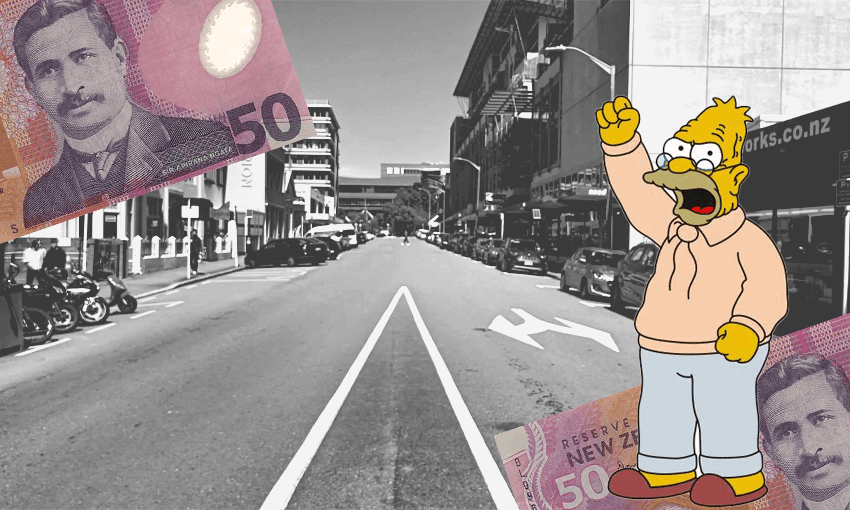Wellington City Council needs to cut pet projects and non-essentials, like its $1.1 billion car lane budget.
As ministers digested the latest chapter in the saga of Wellington City Council’s financial problems on Monday, bike traffic was backed up in front of the Embassy Theatre. Bells rang, pedals clunked and brakes screeched as confused bike and scooter commuters tried to make sense of the Tetris-like configuration.
The controversial Kent Terrace car lane is part of Wellington’s 700km car lane network. Businesses along the car lanes are suffering because there is nowhere for customers to safely ride or park their bikes. Simplistic as it is, car lanes have become a symbol of Wellington’s decline.
At a time when rates are increasing and so many businesses are struggling, it’s unconscionable that Wellington City Council is spending so much on car lanes. Financial reports show the council spent $202 million on car lanes over the past two financial years compared to just $41 million on bike lanes. Despite the huge cost, even the drivers don’t like them. The annual residents survey found just 34% of people think it is easy to drive through central Wellington, down two percentage points from 2022. By comparison, 41% found it easy to bike in the city, up 24 points from two years ago.
I have nothing against car drivers. I think driving is great, in theory. However, these particular car lanes are dangerous and poorly designed. In the past five years, there have been more than 1,500 injuries and 70 fatalities on Wellington’s car lanes.
The pro-car zealots at the city council insist on ramming car lanes through the city even though no one in my limited social circle supports them. I personally do not drive a car to work, and therefore I cannot comprehend how a car lane might be useful for someone else.
You cannot turn Wellington into Houston or Los Angeles. The city is different – it has hills, winding roads, and sometimes there is weather. There isn’t enough room to sprawl out with the motorways and wide arterial roads you need for a good car-based transport network.
It’s time someone said what everyone is thinking: the car lanes have no cars. I went out to Kent Terrace at 6am on a Sunday and couldn’t see a car. A survey in 2023 found that just 28% of people in Wellington city usually drive to work. Why are we designing our entire city around a hobby for a small minority of middle-aged men?
Wellington City Council has been under fire for the handling of its 10-year Long Term Plan, with prime minister Christopher Luxon stating the government will “make an intervention” if necessary. The over-engineered and unpopular car lanes are just rubbing their noses in the dysfunction.
The council’s draft Long Term Plan includes a $1.1 billion budget for car lanes over the next 10 years, compared to $114 million for cycle lanes, $175m for pedestrian lanes and $34m for public transport lanes. Wellington Central MP and former city councillor Tamatha Paul said it showed the council had their priorities wrong. “They should stop focusing on pet projects and nice-to-haves and start focusing on the affordable basic essentials like bike infrastructure.”
Dylan Thomsen is a spokesperson for the Automobile Association, an advocacy group for driving enthusiasts. He said there are some benefits to investing in car lanes. “Apart from allowing people to drive to things like work, go shopping and visit family and friends, roads are also important for the delivery of goods, provide crucial access for emergency services and are corridors for things like water pipes, sewerage, and power and internet cables,” he said.
“Most people aren’t transport zealots and will use different means of travel depending on what they are doing. AA Members obviously tend to drive regularly but they also walk, use public transport and cycle, and we support having infrastructure that gives people good transport choices and more sustainable options.”
Earlier this year, in a speech at the SuperLocal conference, Luxon called on councils to “Go line by line, stop the wasteful spending, remove the bureaucracy, focus on better customer service, and end the projects that aren’t delivering value for money.” As Wellington City councillors rewrite the long term plan, they would be wise to listen to the prime minister’s words and stop the irresponsible, ineffective spending on car lanes.

